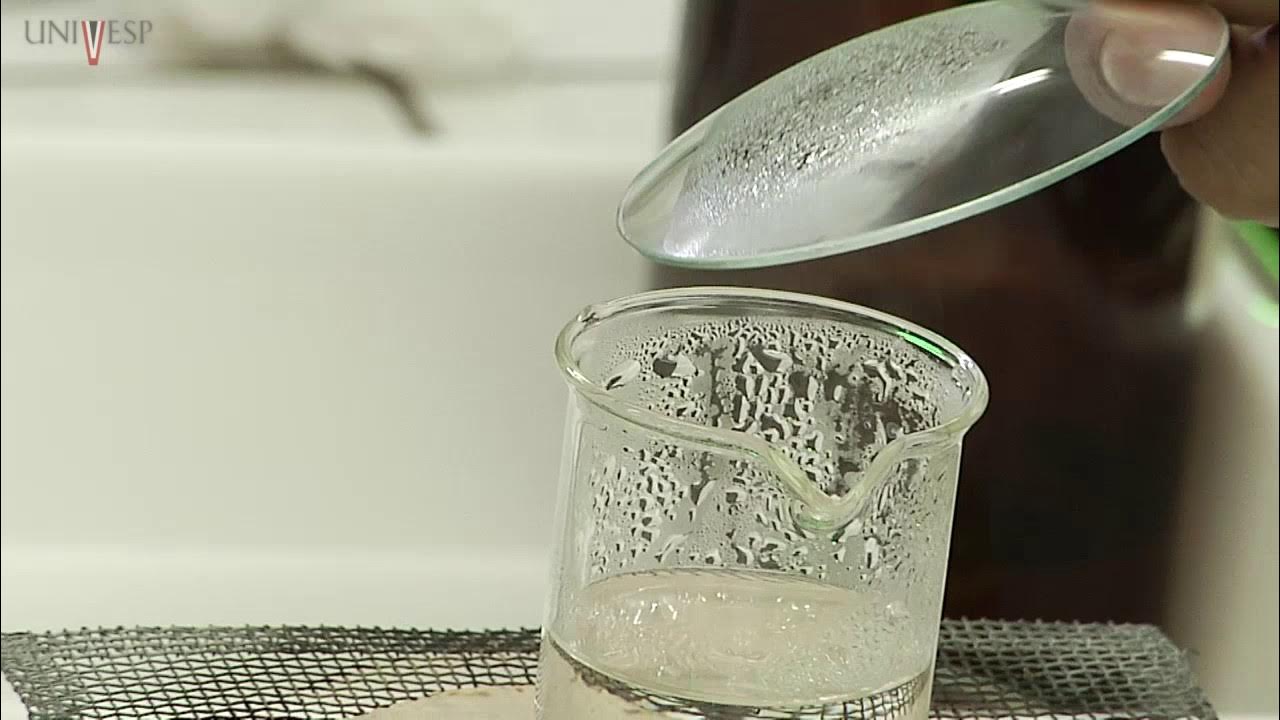POLARITY OF MOLECULES - Part I | ELECTRONEGATIVITY DIFFERENCE | Physical Science
Summary
TLDRIn this physical science lesson, students explore the concept of molecular polarity through an experiment mixing water, dishwashing liquid, and cooking oil. The video explains that polarity arises from the unequal sharing of electrons, exemplified by water's polar nature and oil's nonpolar status. It delves into electronegativity, dipole moments, and how they contribute to a molecule's polarity. The lesson also touches on the electronegativity scale and the impact of molecular geometry, using carbon dioxide as an example of a linear, nonpolar molecule despite polar bonds. The content is designed to help students distinguish between polar and non-polar molecules.
Takeaways
- 🧪 The lesson is about understanding the polarity of molecules and distinguishing between polar and non-polar molecules.
- 🥣 An experiment is conducted to observe the interaction between water, dishwashing liquid, and cooking oil, illustrating the difference in polarity.
- 🌊 Water and oil do not mix because water is a polar molecule and oil is non-polar, demonstrating the concept of polarity through a simple example.
- ⚛️ Polarity arises from the unequal or asymmetrical distribution of electrons in a molecule, leading to a partial charge difference.
- 🔍 The molecular structure of water is highlighted, showing how oxygen and hydrogen atoms share electrons unequally due to differing electronegativities.
- 💪 Electronegativity is the ability of an atom to attract electrons in a bond, with oxygen being more electronegative than hydrogen.
- 📊 The concept of a dipole moment is introduced, where the unequal sharing of electrons creates a positive and negative pole in a molecule.
- 🔗 Nonpolar molecules are formed when there is equal or symmetrical distribution of electrons, as in the case of oxygen gas (O2).
- 📊 The electronegativity difference between atoms in a molecule can be used to determine the type of bond: non-polar covalent, polar covalent, or ionic.
- 📚 The periodic table is used to find the electronegativity values of elements, which helps in understanding the polarity of molecules.
- 🏗️ The shape of a molecule also plays a crucial role in its polarity, as seen in the example of carbon dioxide being a non-polar molecule despite having polar bonds.
Q & A
What is the main topic of the physical science class in the video?
-The main topic of the class is the polarity of molecules, focusing on the difference between polar and non-polar molecules.
What experiment is conducted in the video to demonstrate the concept of polarity?
-The experiment involves mixing water, dishwashing liquid, and cooking oil to observe their behavior, illustrating the difference between polar (water) and non-polar (oil) substances.
Why do water and oil not mix according to the video?
-Water and oil do not mix because water is a polar molecule and oil is a non-polar molecule, which means they have different electron sharing characteristics.
What is the significance of the electronegativity of an atom in the context of polarity?
-Electronegativity is the ability of an atom to attract electrons in a bond, which determines whether the sharing of electrons is equal or unequal, thus affecting the polarity of a molecule.
How is the polarity of a molecule represented in the video?
-Polarity is represented by a dipole moment, which is indicated by an arrow pointing towards the more electronegative atom, showing the direction of the partial negative charge.
What is the octet rule and how does it relate to the formation of water molecules?
-The octet rule states that atoms tend to gain, share, or transfer electrons to achieve a stable electron configuration, often eight electrons in their outermost shell. In water, oxygen shares electrons with hydrogen to fulfill this rule, forming a polar covalent bond.
How can the polarity of a molecule be determined based on electronegativity differences?
-The polarity of a molecule can be determined by the electronegativity difference between the atoms in the molecule. If the difference is 0 to 0.4, it's non-polar covalent; 0.5 to 2.0, it's polar covalent; and above 2.1, it's ionic.
What is the electronegativity difference between hydrogen and oxygen in a water molecule?
-The electronegativity difference between hydrogen (2.1) and oxygen (3.5) is 1.4, which falls within the polar covalent bond range, making water a polar molecule.
Why is oxygen gas (O2) considered a non-polar molecule despite being composed of oxygen atoms?
-Oxygen gas is non-polar because the two oxygen atoms have the same electronegativity and share electrons equally, resulting in no dipole moment and an even distribution of electron density.
Can the shape of a molecule affect its polarity even if the bonds are polar?
-Yes, the shape or molecular geometry can affect the overall polarity of a molecule. For example, carbon dioxide has polar bonds but is non-polar overall due to its linear shape, which distributes the charge evenly.
What will be discussed in the next video according to the script?
-The next video will discuss molecular geometry and the shape of molecules, which is another factor in determining the polarity of a molecule.
Outlines

Этот раздел доступен только подписчикам платных тарифов. Пожалуйста, перейдите на платный тариф для доступа.
Перейти на платный тарифMindmap

Этот раздел доступен только подписчикам платных тарифов. Пожалуйста, перейдите на платный тариф для доступа.
Перейти на платный тарифKeywords

Этот раздел доступен только подписчикам платных тарифов. Пожалуйста, перейдите на платный тариф для доступа.
Перейти на платный тарифHighlights

Этот раздел доступен только подписчикам платных тарифов. Пожалуйста, перейдите на платный тариф для доступа.
Перейти на платный тарифTranscripts

Этот раздел доступен только подписчикам платных тарифов. Пожалуйста, перейдите на платный тариф для доступа.
Перейти на платный тарифПосмотреть больше похожих видео

Práticas para o Ensino de Ciências - Aula 12 - Água

Praktikum Tegangan Permukaan

Polarity Water and Carbon Tetrachloride

"Tekanan Hidrostatis"@nova_scienceart9251 #videopembelajaranipa

POLARITY OF MOLECULES - Part II | MOLECULAR GEOMETRY | VSEPR THEORY | Physical Science

Classificação das soluções - Química - Ensino Médio
5.0 / 5 (0 votes)
